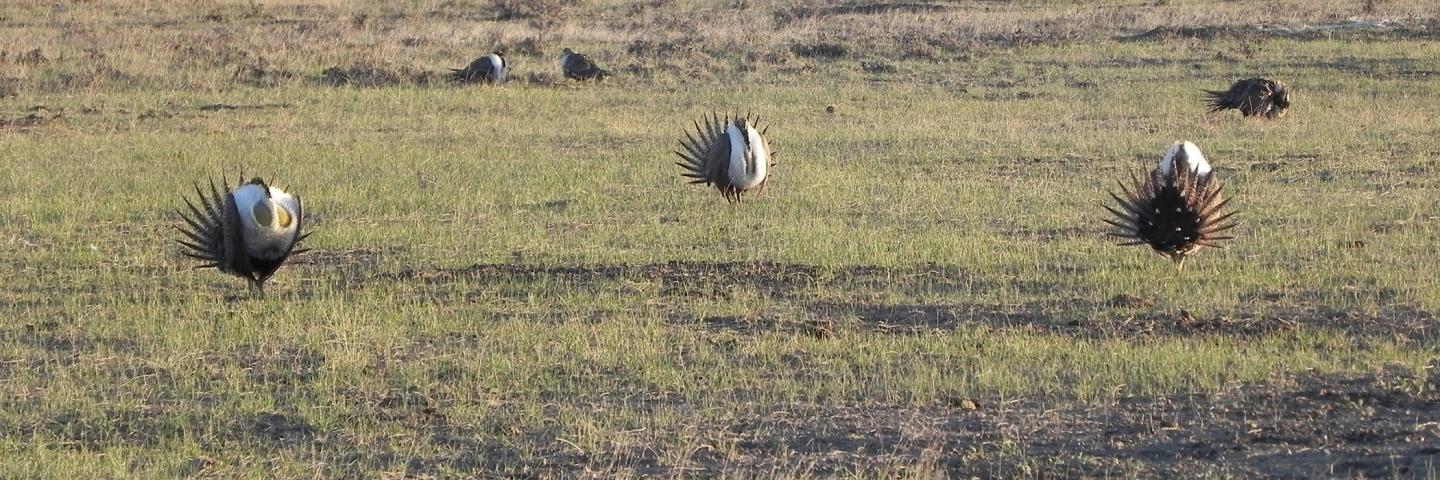
Counties: Crook
Land Use: Crop, Range, Pasture, Farmstead, Associated Ag Land
Primary Resource Concern Addressed
- Concentrated erosion
- Degraded plant condition
- Fire management
- Livestock production limitation
- Pest pressure
- Terrestrial habitat
Conservation Practices Offered
- Brush Management (314)
- Herbaceous Weed Treatment (315)
- Conservation Cover (327)
- Prescribed Burning (338)
- Cover Crop (340)
- Critical Area Planting (342)
- Pond (378)
- Windbreak/Shelterbelt Establishment and Renovation (380)
- Fence (382)
- Fuel Break (383)
- Woody Residue Treatment (384)
- Irrigation Field Ditch (388)
- Riparian Herbaceous Cover (390)
- Riparian Forest Buffer (391)
- Firebreak (394)
- Grade Stabilization Structure (410)
- Wildlife Habitat Planting (420)
- Irrigation Pipeline (430)
- Irrigation System, Microirrigation (441)
- Sprinkler System (442)
- Irrigation System, Surface and Subsurface (443)
- Irrigation Water Management (449)
- Access Control (472)
- Mulching (484)
- Tree/Shrub Site Preparation (490)
- Obstruction Removal (500)
- Forage Harvest Management (511)
- Pasture and Hay Planting (512)
- Livestock Pipeline (516)
- Livestock Pipeline (516)
- Pond Sealing or Lining, Geomembrane or Geosynthetic Clay Liner (521)
- Prescribed Grazing (528)
- Pumping Plant (533)
- Grazing Land Mechanical Treatment (548)
- Range Planting (550)
- Access Road (560)
- Heavy Use Area Protection (561)
- Spring Development (574)
- Livestock Shelter Structure (576)
- Streambank and Shoreline Protection (580)
- Channel Bed Stabilization (584)
- Structure for Water Control (587)
- Pest Management Conservation System (595)
- Tree/Shrub Establishment (612)
- Watering Facility (614)
- Water Well (642)
- Restoration of Rare or Declining Natural Communities (643)
- Wetland Wildlife Habitat Management (644)
- Upland Wildlife Habitat Management (645)
- Structures for Wildlife (649)
- Road/Trail/Landing Closure and Treatment (654)
- Wetland Restoration (657)
Ranking Criteria
NRCS uses these questions to evaluate applications for this initiative and to prioritize applications for potential funding. State and national ranking questions also apply. See more information on the EQIP program page.
Ranking Questions –
- Will the proposed treatment improve direct connectivity to a larger, open sagebrush habitat?
- Is the proposed treatment area predominantly flat or gently sloping hills (approx.. <15% slope)?
- Does the understory vegetation of the proposed treatment area consist primarily of native grasses, forbs, and shrubs?
- Is the proposed treatment area free of old-growth juniper, pine, and as planned, will no pockets of trees (riparian areas exempted) or areas dominated by annual grasses remain after treatment?
- Is the observed rangeland trend stable or positive, or does the planned contract include prescribed grazing to address perennial plant health?
- Is the proposed treatment primarily targeting mesic habitat, phase I or II conifer encroachment, and/or an isolated invasive annual grass infestation (no other known infestations within 1 mile that are not planned for treatment)?
- Is the proposed treatment primarily targeting treatment of Phase III conifer encroachment, treatment of invasive annual grasses in close proximity (<1 mile) of other infestations that will not be treated, or other practices to address threats identified on the SGI Threats Checklist?
- Does the PLU intersect a priority area for conservation layer for WLFW SGI GRSG?
- Do any PLUs intersect priority 1 area?
- Do any PLUs intersect priority 2 area?
- Do any PLUs intersect priority 3 area?
- No PLUs intersect priority areas 1-3.
- What is the percentage of the range and pastureland associated with the operation that is contained in the conservation plan?
- All eligible range and pastureland are enrolled.
- 50% or more of the eligible range and pastureland are enrolled.
- Less than 50% of eligible range and pastureland are enrolled.
- Do the planned practices address threats that were identified for GRSG?
- All identified threats are addressed.
- 75% or more of identified threats are addressed.
- 50% or more of identified threats are addressed.
Less than 50% of identified threats are addressed.

